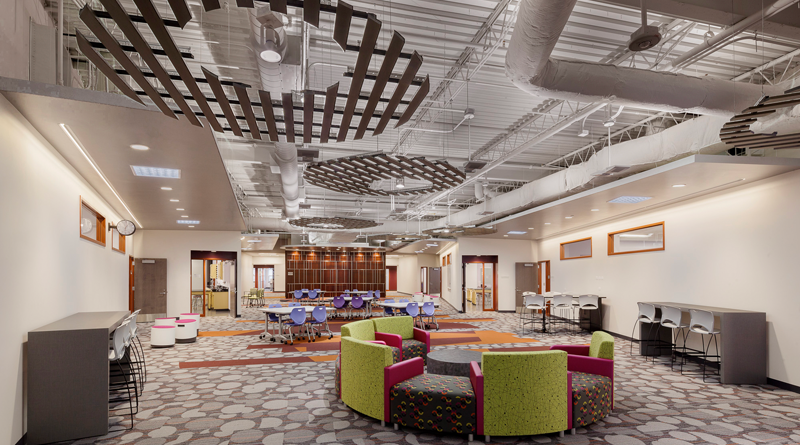Flexible Design Prepares Schools to Weather the Unexpected
By Nick Bassing
The back-to-school season this year was accompanied by a new round of worries and concerns. While COVID-19 vaccines roll out to those 12 and older, the safety measures that dominated the past school year, including social distancing and remote learning, are being phased out in many areas.
The evolving guidance surrounding student and faculty health and safety presents a compelling case for designing and building flexible learning environments that can adapt to changing needs—even those that don’t rise to the level of a global pandemic. And, as recent projects have shown, adaptable design doesn’t have to come with a soaring price tag.
In the past 18 months, we’ve seen flexible design help school administrators bring their communities together, resuming in-person learning more quickly than traditional school environments. One such school is the Ida Crown Jewish Academy in Skokie, Illinois, completed in 2016, which features an unconventional, highly flexible design that reflects the school’s non-traditional learning approach.
The most distinctive feature of the Ida Crown campus is its division into separate zones according to subject matter and activity: administrative, humanities, religious studies, math & science, arts and athletics. Whereas in a traditional high school setting, teachers remain in their dedicated classrooms and students circulate from room to room for each class, Ida Crown has flipped the script: each teacher has a private office, but the instructors are the ones who rotate to different classrooms.
In more-typical times, this unique construction optimizes the square footage of the school, expanding and contracting individual classrooms depending on each one’s functional use and different points in the school day. It also supports the academy’s hyper-vigilant focus on security. In the event of an emergency, such as an active shooter, each zone of the school can be shut down and closed off entirely from the others. During the coronavirus pandemic, these zones served the school’s population by making it easier to keep groups of students and teachers separated from one another and thus reduce the risk of transmission.
The distinctive layout of the Ida Crown campus also demanded a unique approach to the school’s mechanical systems, particularly when it came to ventilation. The design team worked with electrical engineers and equipped each zone with its own massive filtration unit for outside air intake. In addition to reducing operational costs and maintenance, this functional approach turned out to be serendipitous during the height of the pandemic. Since each individual zone filters and circulates its own air, airborne transmission in the event of a COVID case on campus would be limited to a single zone instead of spreading throughout the whole building.
Above all else, the remarkable flexibility of the Ida Crown campus enabled the students and staff to adapt their learning environment. The rooms within the school’s different zones, as well as the central religious chapel, library and cafeteria spaces, were all designed with flexibility in mind. Movable furniture and operable partition walls allow administrators to transform larger spaces for facilitating social distancing and reconfigure rooms based on shifting class sizes and functions.
From a construction standpoint, designing and building a project with this much flexibility requires some unique considerations—and understanding the curriculum and subject matter is fundamental to success. For example, furniture storage is critical, because not every piece of furniture is on the floor at all times. Additionally, architects and designers must pay close attention to acoustics and adjacency: if a space will be used for a religious service, it needs to be quiet, even if a noisy sporting event is happening elsewhere on campus at the same time.
The Ida Crown campus was not planned with a pandemic in mind, but its design and construction helped the school weather the most uncertain days of COVID-19 and reopen in-person classes well before traditionally designed institutions. While the pandemic is hopefully a once-in-a-lifetime event, the lesson for schools is clear: The more flexibility you embrace in design and construction, the better prepared you will be to adapt to the unpredictable, while supporting students on all kinds of learning journeys.
Nick Bassing is a vice president at Project Management Advisors, Inc., where he brings nearly 15 years of construction management and architectural design experience to manage education, civic, healthcare, research, and tech office interiors developments and renovations.

